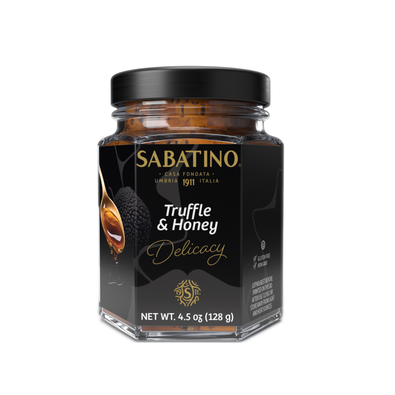Back in the 1990’s we saw a boom in United States’ truffle consumption, where truffles were synonymous with Michelin-starred, white tableclothed restaurants. But now, over 30 years later, we see truffles everywhere - beyond prestigious restaurants. White tablecloths have been traded for naked countertops, cuisines span beyond the traditional and refined Italian and French techniques, and the usage of truffles have seen a large shift from classic to daring. The traditional idea of how to use fresh truffles is now being challenged.
This shift has changed the way we look at truffles – the style in which we use and cook with truffles has completely transformed. To understand how to use truffles, we must first look at the major types of fresh truffles:
Summer Truffles (Tuber Aestivum), Burgundy Truffles (Tuber Uncinatum), Black Winter Truffles (Tuber Melanosporum) and White Truffles (Tuber Magnatum).

Each of these truffles have varying levels of flavor and aroma. For instance, both the Summer and Burgundy truffle are light in flavor and aroma, and therefore we recommend to never actually ‘cook’ them. We use the term ‘cook’ to mean touching or using any form of heat for an extended period of time. Due to the light nature of these particular species, we do not recommend cooking with them. These types of fresh truffles are best used by simply adding them to a finished dish e.g., shaving onto pasta. The residual heat of the finished dish will help to unlock the delicate flavor and aroma of these truffles.
When we look at both the Black Winter and White truffle varieties, these species have a much stronger flavor and aroma. However, a Black Winter truffle is more pronounced in both flavor and aroma and has a stronger composition than that of the delicate White truffle, so we suggest only ‘cooking’ with black winter truffles.
This means that Black Winter truffles can handle heat better compared to its more delicate siblings. That being said, we still prefer methods of indirect heat. A classic example is the technique employed in the French dish poulet demi deuil, where slices of black winter truffles are placed under the chicken skin.
In short, you should refrain from exposing any truffle to direct heat and/or a long duration of intense heat. The Black Winter species is the most flexible to actually ‘cook’ with. However, you do not actually need to cook any of the fresh truffle species to enjoy them. They are safe and perfectly delicious in their raw form, thinly shaven or grated into or onto a dish.
When adding fresh truffles to dishes, the classic approach is to thinly shave fresh truffles onto bowls of creamy risotto, eggs, pasta, white pizza, and potato purees. By using starchy or fatty ingredients, one allows for the truffles to be the star of the show. The truffle does not have to compete with any of the flavors but instead creates rich, earthy bites for the palate.

Today, as we gain more and more access to diverse cuisines and different approaches to food, we’ve seen this same exact concept (high fat + truffle) go beyond the original French and Italian style, creating an exciting opportunity to be able to give more life to these precious gems.
Asian concepts are utilizing fresh truffles shaved or minced onto pieces of fish like fatty toro or bowls of ramens with black winter truffles infusing the broth. American eateries are grating fresh truffles on crispy French fries and layering them onto juicy burgers. We’ve seen truffles mixed into sausages, dumplings, meat pies, and used by all types of unique regional cuisines to flavor and add intensity to the finished product.

Part of the elegance and allure of truffles is that they can be used across a plethora of different cuisines and dishes. When it comes to cooking with truffles, the easiest approach is a delicate one where heat is used sparingly to unlock the exquisite texture, flavor, and aromas of your truffle. Keeping in mind that truffles are often used to enhance dishes is a great reminder that truffles are best served as a final addition to the plate to help elevate the flavors in the dish with a robust, fragrant focal point that will wow your senses and tastebuds as well as those of your guests.

For 110 years, Sabatino Tartufi has helped chefs and home cooks alike experience and discover the magic of truffles across the world. Whether its harvesting, shipping, and delivering the finest quality fresh truffles directly to kitchens everywhere or developing new, artisanally-crafted truffle products for use in a variety of cuisines, Sabatino Tartufi is all about truffles.









